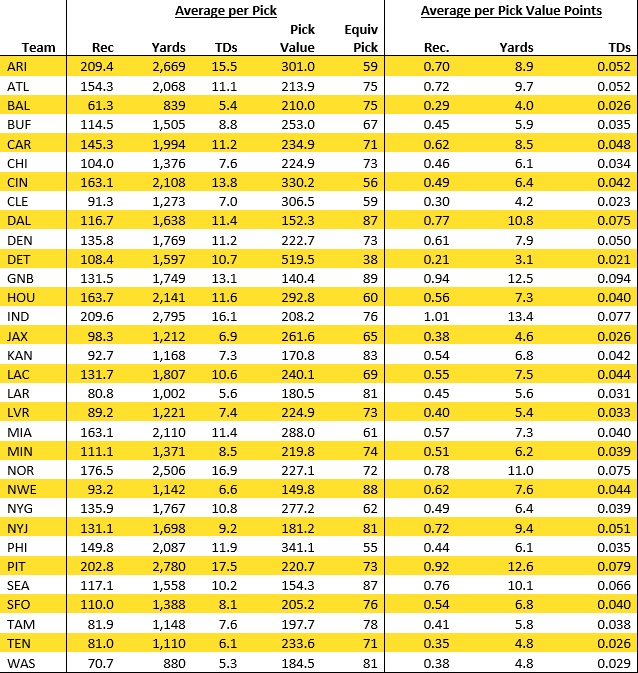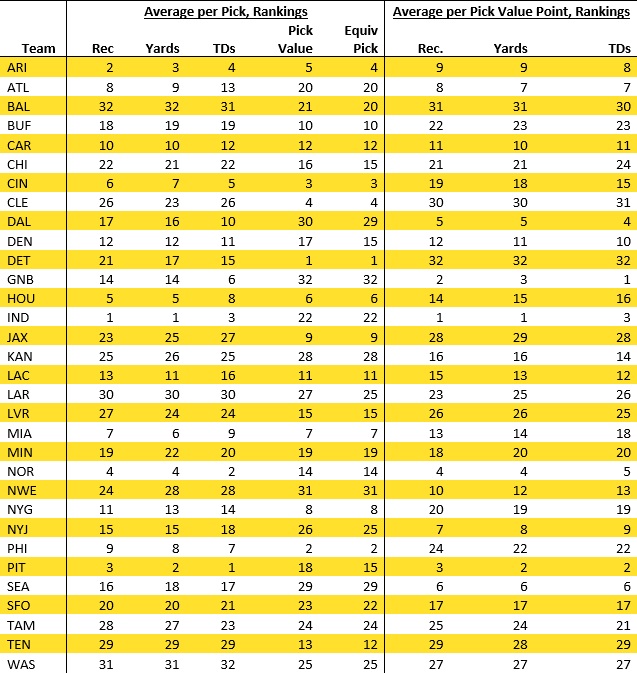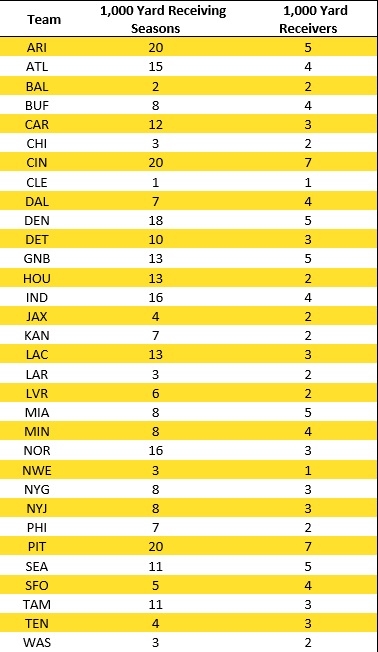We all have heard that the Pittsburgh Steelers are great at drafting wide receivers, right? It is thrown around so often that it has become established fact in the minds of the media, analysts, and many fans. With Kevin Colbert’s career coming to an end, now is as good a time as any to dive into the truth behind this belief.
We are going to take a look at all the WRs drafted under Kevin Colbert’s tenure (2000 – 2021) and just what sort of production resulted from those draft picks.
All stats for this study were taken from Pro-Football-Reference. I did audit and edit the position assignments. PFR is mostly accurate, but I went through the top receiving yardage players (it’d be impossibly long of a task to review all players) and made sure all the WRs were listed as such, and any TEs or RBs were excluded from the WR list. Changes I made were: Delanie Walker changed from WR to TE, Devin Hester from DB to WR, Darren Waller from WR to TE, Devin Funchess from TE to WR, Dri Archer from WR to RB. So that’s all who I changed; I’m sure I’ve missed some, but I did my best without making it a monumental task. I’ve also chosen to break things down using this trade value chart to assign a value to each draft slot.
So right away, all I can really say is wow! It turns out that this is narrative is based in some pretty solid reality. Over those 22 drafts, the Steelers have selected WRs who rank second in total receptions, first in total yards, and second in total TDs. Steelers’ drafted WRs totaled 4,665 receptions for 63,937 yards and 403 TDs. That alone pretty much verifies that the Steelers have been great at drafting WRs. A couple of other commonly “known” facts are that the Ravens and Patriots struggle to draft wide receivers, and here you have evidence to back that up, with both teams in the bottom of the rankings with the Ravens 30th in yards, and the Patriots 31st. The difference here isn’t small either; the Steelers totaling over three times the yardage as last place Washington.
More work is required though; after all if you have to throw a ton of draft capital at the position to get that sort of return, it’s not necessarily a product of good drafting as it is volume. The Steelers used 23 draft picks on the position, which put them only at 15th-most. With some teams spending considerably less draft picks (the Chargers and Colts only used 15 selections on wide receivers), we need to break it down by draft investment. I took two approaches, one just by the total number of draft selections, and the other by the pick’s trade value according to the trade chart. The latter is probably more meaningful, since investing a bunch of sixth-round picks is pretty different than using a couple of first-rounders.
The narrative continues to hold up. Steelers come in third, second, and first in terms of receptions, yards, and touchdowns per draft pick at the wide receiver position. They came in with 202.8 receptions, 2,780 yards, and 17.5 TD per wide receiver drafted. The numbers per draft pick value are a little more abstract, but just know the bigger the number, the better. High draft picks have a high value, so getting a lot of yardage for a low value investment is good. Just focus on the rankings. Pretty incredible. They stack up just as well when accounting for the draft pick value used, with them at third, second, and second in receptions, yards, and TDs, respectively. On average, they used 220.7 “points” of draft capital per WR, which equates to about the 73rd pick in the draft.
The Ravens continue to bring up the rear ranking 31st in receiving yards per draft pick value with just 4.0 compared to the Steelers’ 12.6. The Patriots show why assessing things per pick value is important, as their total production numbers were low, but that corresponded to them making pretty low investment in the position overall. So while the Patriots have not found much wide receiver production in the draft, they have not tried all that hard. Unlike the Ravens who have invested heavily in the position, and still saw very little returns. The Bengals have got a lot of production out of the WRs they drafted, but they used a lot of high draft picks to obtain them.
A counter argument to this is that Ben Roethlisberger had a lot to do with that, and that he essentially “made” those wide receivers. To counter that, I’d say that 38% of those total receptions, 35% of the yards, and 35% of the TDs came with teams besides the Steelers. Plaxico Burress, Antwann Randle El, Santonio Holmes, Mike Wallace, and Emmanuel Sanders all had pretty significant production with other teams. So while Roethlisberger undoubtedly helped these WRs produced, there was still significant production from their draft classes when they left the team.
The other counter argument that might be levied is that this is all propped up by a couple of great talents doing all the heavy lifting, Antonio Brown, for example. That’s a fair point, so what if we just look at the total number of 1,000 yard seasons, but also the number of different players to have a 1,000-yard season?
Steelers drafted WRs had 20 total 1,000-yard seasons, which is tied for the most of any team. Colbert selected seven different wide receivers that at some point had 1,000 or more yards receiving in a season: Burress, Holmes, Wallace, A. Brown, Sanders, Smith-Schuster, and D. Johnson. Those seven different players were tied for the most drafted by any team.
Pretty much any way you want to look at it, Kevin Colbert was the best at drafting wide receivers. Let’s hope that George Pickens and Calvin Austin III can continue Colbert’s amazing success with drafting wide receivers.













